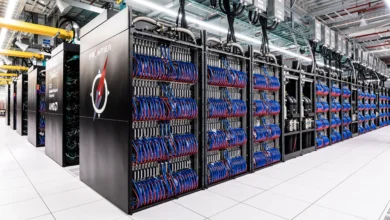
Infrastructure Proposals for More Pedestrian-Friendly Roadways
Public roadways are intended to be safe for all who use them, not only car and truck drivers but also pedestrians and cyclists. However, this is presently not the case. About 6,000 pedestrian deaths occur each year in the United States alone. This number has been rising over the past decade and drawing the attention of city managers across the nation.
The question is what actions do we need to take to protect anyone who travels on our nation’s roadways— no matter how they choose to travel? Simply, we need to reevaluate how we engineer and design our transportation systems. Cities that take the initiative to create more pedestrian-friendly roadways are offering a means for their citizens to reduce their environmental impact, as well as promoting physical and mental health among their inhabitants. The difficulty in providing pedestrians and cyclists with safe means of transport is implementing the infrastructure to do so.
Why are Pedestrians in Increasing Danger?
The National Association of City Transportation Officials (NACTO), believes there is a failure in our current operating systems because there has been too much focus on how to safely and efficiently move cars, not people. There has been been an emphasis on ride shares, motorized scooters, electric cars, and fuel efficiency but a lack of attention to bike and walking paths.
Additionally, the Governors Highway Safety Association attributes the rising number of pedestrian deaths to the increase in the number of smartphone users and the legalization of marijuana in a growing number of states. In its annual report, “Spotlight on Highway Safety”, the GHSA states, “while the report does not find or imply a definitive link between these factors and pedestrian deaths, it is widely accepted both smartphones and marijuana can impair the attention and judgment necessary to navigate roadways safely behind the wheel and on foot.”
The blame does not fall solely on drivers but pedestrians as well. It is increasingly common to see people walking with their heads down looking at their phones, both on the sidewalk and when entering and crossing the street. Avoiding accidents is the responsibility of both drivers and pedestrians to bear.
Successful Examples
Many cities have seen success in their proposed projects, including San Jose, California. In 2018, San Jose set out on its project, Better BikewaySJ. The project will implement 23 miles of protected bike lanes, which in turn protect the sidewalks and those walking on them by putting more space between pedestrians and the driving lane. The bike lane is to be used by scooters and skateboards to remove the risk of collision with those walking on the sidewalks.
There will be a loading lane to prevent bicyclists from running into car doors suddenly being opened. The driving lanes will be made narrower to discourage drivers from speeding. The added lanes create a more protected crosswalk that places pedestrians in a more visible area in hopes of avoiding crosswalk collisions.
Image Source: sanjoseca.gov
Similar models are being proposed and implemented in a growing number of cities, including South Bend. South Bend is investing about $20 million into an initiative they have named Smart Streets. It aims to implement changes similar to San Jose to eliminate the straight one-way streets that have previously aimed to serve only drivers exiting and entering the city.
Infrastructure Restructure
Like any other state contending with growing infrastructure needs, Indiana can look towards learning from states with a successful implementation of safer pedestrian roadways and do so soon. Indiana is currently the 12th highest ranked state in pedestrian deaths in the nation.
The work of civil engineers is integral in creating and maintain infrastructure. Indiana DOT will be working with these engineers and others on projects which include high-visibility crosswalks, countdown crosswalks, audio crosswalks, and refuge areas, according to the state’s 2018 Highway Safety Plan.
Organizations across the nation are taking it upon themselves to be active in creating positive change. NACTO’s mission is to “build cities as places for people, with safe, sustainable, accessible and equitable transportation choices that support a strong economy and vibrant quality of life.” The organization currently works with 63 cities and 11 transit companies to achieve their mission. In 2017, members of NACTO built an accumulative 349 bikeway miles, making the total bikeway mileage nearly 7,400 across all cities involved.
The major points of focus for infrastructure improvement should be:
- Installing bike lanes or protected bike tracks
- Intersection treatments to allow pedestrians to be more visible
- Implementing bike, walk, and audible crosswalk signals
- Clear bicycle signs and markings
- The design should provide accessibility for all ages and abilities
Integrating fundamental changes to the way the infrastructure of our cities is created could greatly affect population health. Providing ways for community members to commute without utilizing a car encourages self-propelled motion which may lead to lowered health care costs. The more people have the opportunity to choose to safely walk or bike to their destination, the healthier lifestyles that will lead.






